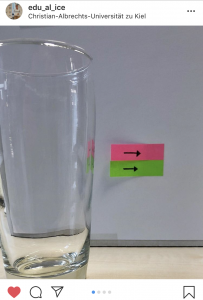
Guest post: Alice shows magic tricks and explains refraction of light in water
My friend Alice Langhans runs a super cool science communication Instagram (@edu_al_ice), where she posts about her experiences as PhD student in physics education research. And there is a lot more…
